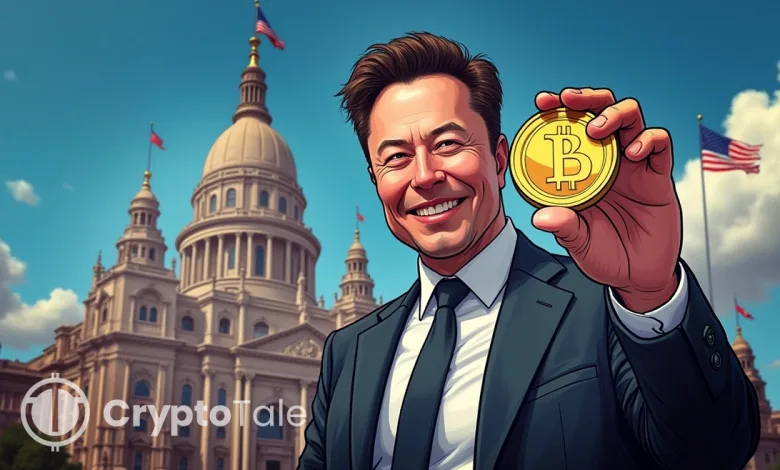Musk’s America Party Will Support Bitcoin And Declares ‘Fiat Is Hopeless’

- After the split up from Trump, Musk forms the America Party, pro-tech centrist party.
- Musk claims the ‘One Big Beautiful Bill’ as fiscally reckless and calls it a “debt slavery bill”
- He says, ‘fiat is hopeless’ and advocates that the new party would embrace Bitcoin.
Elon Musk claims that the America Party emerged after Musk’s split with President Trump over the “Big Beautiful Bill,” is the solution in response to a post on X saying centrism is now seen as radical. Musk also mentioned, “Fiat is hopeless,” confirming a pro-Bitcoin foundation.
Elon Musk has also been a supporter of cryptocurrency for a very long time, as both SpaceX and Tesla have included Bitcoin in their corporate treasuries. Must condemned the “Big Beautiful Bill,” as fiscally reckless and dubbed the “debt slavery bill”. This became the primary cause for the emergence of America Party.
Prior to his inauguration on January 20th, Trump had made the “One Big Beautiful Bill” a top priority. The single bill aims to follow legislation including several key pillars, allowing him to fulfill his goals, eliminating the need of multiple approvals from Congress.
On May 28th, Musk stepped down from his role in DOGE (Department of Government Efficiency). Musk has begun a three-day social media campaign against the Trump-backed reconciliation measure that was recently passed by the House since resigning as director of the Department of Government Efficiency. He urged Congress to “kill the bill” and termed the legislation “disgusting.”
Democrats and even some Republicans, however, have expressed disagreement with the “One Big Beautiful Bill.” The 2017 tax cuts from Trump’s first term, which detractors claim unfairly benefit wealthy individuals over middle-class and lower-class workers, would be permanent under the proposed plan.
Related: Trump’s “One Big Beautiful Bill” Sparks Clash Over Crypto, Rates, and Subsidies
Earlier, Musk noted that he would start a party and spend money to unseat supporters of the bill. On July 4th, Musk created a poll on X in which he asked whether respondents “want independence from two-party system.” He also claimed that the one-party system is formed to give back freedom. In another post he noted,
The way we’re going to crack the uniparty system is by using a variant of how Epaminondas shattered the myth of Spartan invincibility at Leuctra: Extremely concentrated force at a precise location on the battlefield.
Although the America Party has not yet been formally registered, Musk outlined clear intentions. He noted that the party will not field a presidential candidate in the immediate future but will instead focus on congressional elections. According to his posts and shared tweets, the party plans to champion pro-tech, pro-free speech, and anti-regulation principles. It is expected to adopt centrist policies on issues outside of technology and monetary reform.
Currently, no official website or manifesto exists for the America Party. As of now, all known positions stem from Musk’s personal posts and endorsements. His vision places digital currency, particularly Bitcoin, at the center of economic discussions. With strong support from the tech and crypto communities, the America Party may become a serious contender in reshaping U.S. political priorities in future elections.




